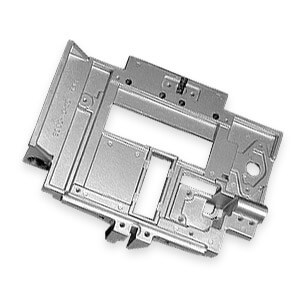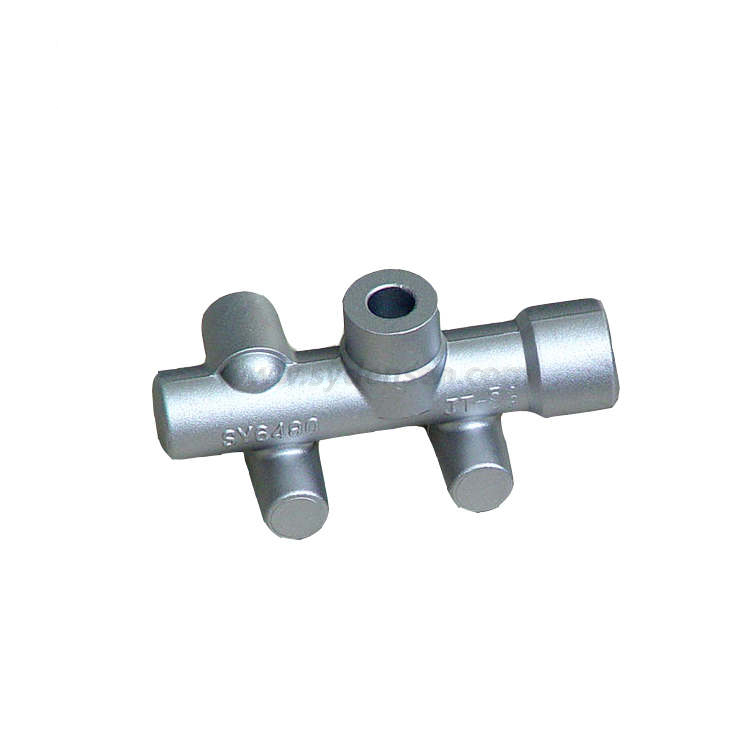Common Questions About Aluminum Foundry You Need to Know
Wiki Article
Aluminum Casting Techniques: a Deep Dive Into Materials and Approaches for Success
Aluminum casting techniques play a crucial duty in manufacturing. Various methods exist, each matched to various applications and demands. Sand casting is preferred for bigger components, while die casting is recognized for its precision in high-volume manufacturing. Financial investment casting offers detailed designs with exceptional finishes. Recognizing these distinctions can substantially affect task end results. Aluminum Casting Company. Picking the appropriate method is not always straightforward, leading to vital factors to consider that must be explored even more.Recognizing Aluminum Casting: A Review
Aluminum casting is a crucial manufacturing process utilized across various sectors to produce elaborate parts with high precision. This method entails putting molten aluminum into a mold and mildew, enabling it to strengthen and take the form of the wanted part. The versatility of aluminum, integrated with its lightweight and corrosion-resistant residential properties, makes it an ideal option for applications in auto, aerospace, and customer items.Different casting strategies exist, each fit to specific needs and project scales. Elements such as mold products, cooling prices, and the intricacy of the design play a significant duty in determining one of the most efficient technique. Furthermore, the properties of the aluminum alloy used can influence the end product's strength, surface, and longevity coating.
Comprehending the fundamentals of aluminum casting makes it possible for suppliers to maximize production processes, minimize waste, and assurance high-grade output, which is necessary in today's open market.
Sand Casting: Methods and Applications
Amongst the various techniques made use of in aluminum casting, sand casting stands out as a result of its versatility and cost-effectiveness. This technique involves creating a mold and mildew from a mixture of sand and binder, which can be formed to fit intricate layouts. Once the mold and mildew is ready, molten aluminum is poured into it, permitting intricate features and details to be recorded.Sand casting is specifically advantageous for producing large components and low-volume manufacturing runs, making it suitable for automotive elements, equipment parts, and creative sculptures. The technique additionally fits a series of aluminum alloys, enhancing its flexibility in various applications. Furthermore, using sand as a mold and mildew product permits simple reclamation and reuse, adding to ecologically sustainable practices. However, accomplishing high dimensional accuracy can present difficulties, requiring experienced workmanship and careful control of the casting process. Overall, sand casting remains an essential technique in aluminum shops worldwide.
Die Casting: Precision and Effectiveness
Die casting is a very efficient technique of creating aluminum components with remarkable dimensional precision and surface coating. This procedure involves forcing molten aluminum right into a precisely machined mold under high stress, which permits complex styles and minimal product waste. The rapid cooling of the alloy within the mold results in a strengthened component that frequently needs little to no added machining.Die casting is specifically advantageous for high-volume production runs, where uniformity and speed are extremely important. It supports the production of complicated geometries, making it appropriate for numerous applications, consisting of vehicle, aerospace, and customer products.
Additionally, the procedure can suit different aluminum alloys, boosting the mechanical residential properties of the finished products. With its capacity to produce lightweight yet long lasting parts, die casting stands apart as a favored strategy in contemporary production, providing both precision and effectiveness in aluminum casting.
Financial Investment Casting: Information and Intricacy
Investment casting, additionally called lost-wax casting, is a flexible and exact method for generating complex aluminum elements. This technique is particularly valued for its capacity to create complex geometries and great information that are often unattainable through other casting approaches. The procedure starts with a wax pattern, which is coated in a ceramic shell. As soon as the covering solidifies, the wax is disappeared, leaving a detailed mold and mildew for aluminum pouring.The advantages of financial investment casting consist of exceptional surface finish and dimensional precision, decreasing the need for extensive machining later. It is especially useful for small to tool production runs where precision is vital. This method accommodates different aluminum alloys, improving read more its applicability across industries. aluminum casting. Inevitably, financial investment casting stands out for its capability to deliver both aesthetic appeal and useful performance in aluminum parts, making it a preferred selection for engineers and developers seeking complex services

Picking the Right Approach for Your Project
How can one determine one of the most ideal aluminum casting method for a certain job? The choice process pivots on a number of important aspects, including the intricacy of the design, the preferred surface area finish, and production volume demands. For intricate styles, investment casting frequently proves beneficial as a result of its capacity to record great details. Alternatively, sand casting may be chosen for bigger, less intricate parts, using cost-efficiency and adaptability in manufacturing.Furthermore, considerations regarding tolerances and mechanical buildings of the final product are vital. For high-performance components, die casting may be the most effective selection, as it offers remarkable dimensional precision and surface high quality. Additionally, recognizing the material properties and compatibility with the picked technique is necessary for ensuring the success of the task. Ultimately, a detailed assessment of these variables will lead the decision-making procedure, causing the most efficient aluminum casting approach for the specific job at hand.
Frequently Asked Concerns
What Is the Ecological Effect of Aluminum Casting Approaches?

How Can I Boost the Surface Area Complete of Cast Aluminum?
To enhance the surface area coating of cast aluminum, one can utilize methods such as sandblasting, brightening, and using finishes. Proper mold and mildew layout and temperature control additionally significantly boost the final surface high quality of the actors item.What Security Safety Measures Should Be Taken During Aluminum Casting?
Throughout aluminum casting, essential safety preventative measures consist of putting on protective gear, ensuring proper air flow, using fire-resistant materials, keeping a risk-free distance from liquified steel, and adhering to devices safety methods to prevent injuries and accidents.Just how Do I Repair Typical Casting Defects?
To fix common casting flaws, one should evaluate the mold for damages, examine the alloy make-up, check putting temperature, readjust cooling rates, and warranty appropriate airing vent to minimize air entrapment and boost casting top quality.What Are the Prices Connected With Different Aluminum Casting Techniques?
The expenses connected with different aluminum casting methods vary considerably, influenced by elements such as material expenditures, manufacturing, tools, and labor scale. Budget factors to consider are important for picking the most suitable casting approach for particular jobs.
Sand casting is preferred for larger components, while die casting is known for its precision in high-volume production. Amongst the different strategies utilized in aluminum casting, sand casting stands out due to its versatility and cost-effectiveness. Die casting is a very efficient technique of producing aluminum elements with exceptional dimensional precision and surface area coating. Financial investment casting, additionally understood as lost-wax casting, is a accurate and functional technique for generating complicated aluminum components. Exactly how can one identify the most appropriate aluminum casting approach for a specific project?
Report this wiki page